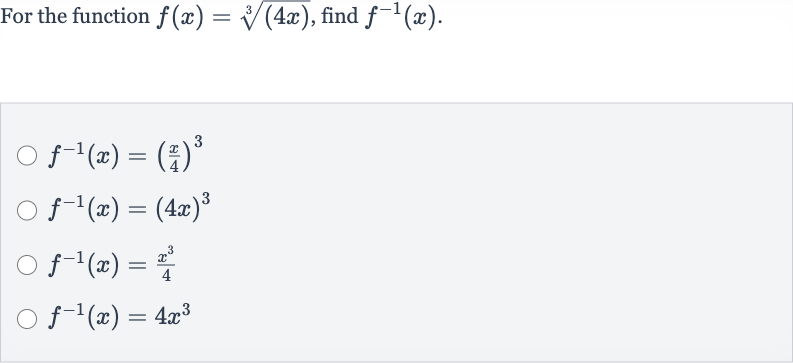AI tutor
Full solution
Q. For the function , find .
- Write function as : To find the inverse function, we first write the function as .
- Express cube root as exponent: Next, we express the cube root as an exponent: .
- Swap and : To find the inverse, we swap and , so we get .
- Cube both sides: Now we need to solve for . To do this, we cube both sides of the equation to get rid of the cube root: .
- Isolate : Divide both sides by to isolate : .
- Find inverse function: Now we have the inverse function, which we denote as : .

